MXA RACE TEST: THE REAL TEST OF THE 2021 HUSQVARNA FC250
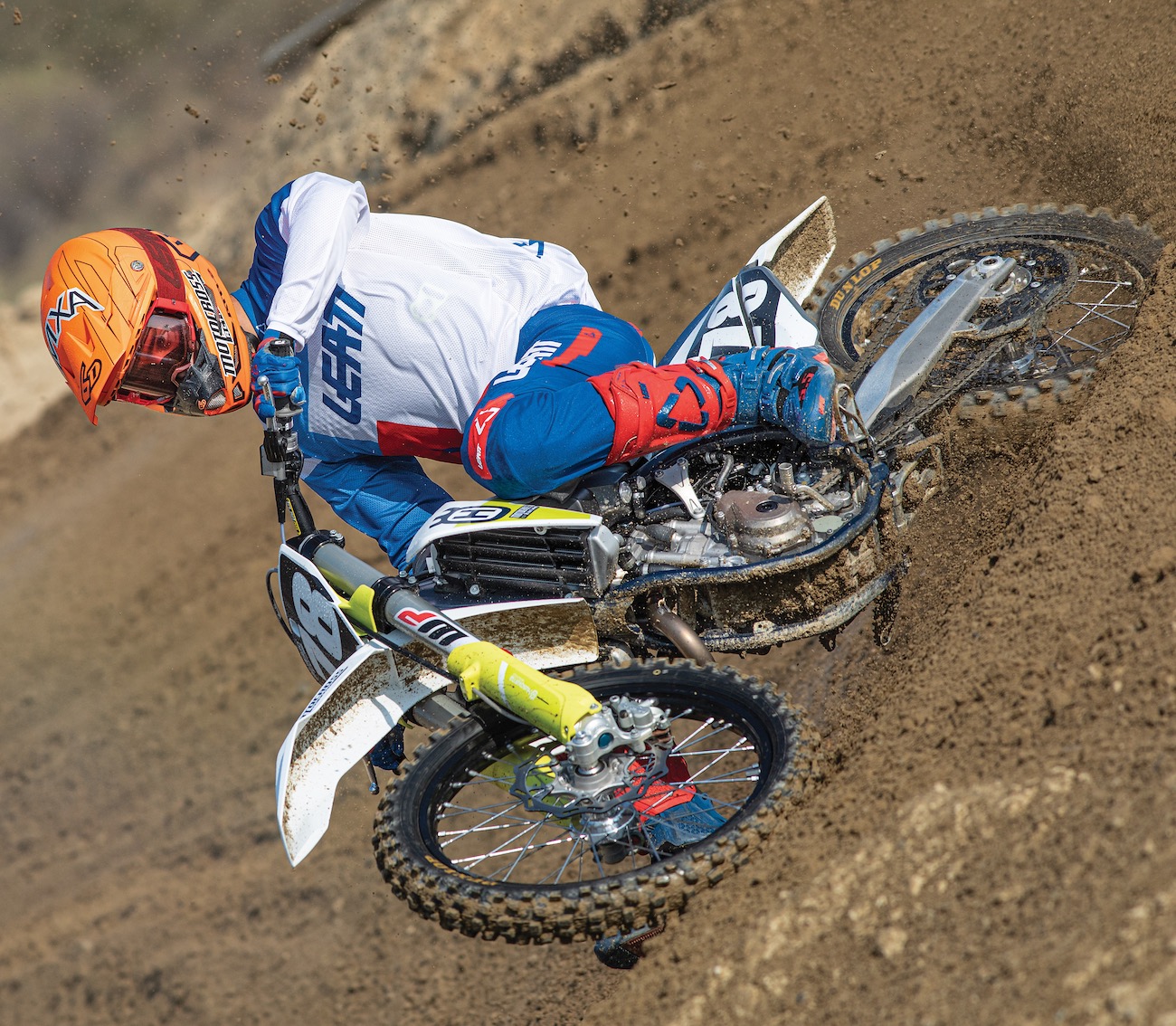
Q: FIRST AND FOREMOST, IS THE 2021 HUSQVARNA FC250 BETTER THAN THE 2020 FC250?
A: Yes. Kayaba and Showa are to blame for the erratic performance and bad reputation of air forks, because they made air technology too complicated for the average rider. The SFF-TAC and PSF-2 forks were a weekend warrior’s nightmare. Thankfully, WP didn’t get derailed by complicated, over-wrought technology like Showa and Kayaba. WP stuck with the age-old mantra, “Keep it simple, stupid.” Husky and KTM believed in the potential of air fork development, so WP focused on simplicity but made incremental improvements each year. Husky and KTM knew that if they got their air suspension right, they would have great forks and a big upper hand in the weight department. For the 2021 model year updates, Husqvarna focused solely on making the WP Xact forks feel like Kayaba SSS spring forks. The question is, did they succeed?
Q: WHAT DOES THE AIR FORK LACK IN COMPARISON TO SPRING FORKS?
A: Let’s start with the benefits of air forks. They are cheaper to build, 3 pounds lighter and easier to assemble. The biggest drawback, other than air buildup, is that spring forks are plusher in the chatter bumps, follow the ground better, and don’t build up excessive air pressure over a long moto. To make a great air fork, the WP engineers needed to replicate a coil spring fork’s ability to stay in contact with the ground. If you have ever ridden air forks and spring forks back to back, you know that spring forks deliver a connected feel to the surface of the dirt, especially under braking. Air forks tend to lift off the bumps like they’re blitzing across whoops. Air forks can still feel plush, but they are missing the connected feel that everyone loves about a good spring fork. Air forks are, however, still in the early stages of development in the motocross world. No one really knows their true potential.
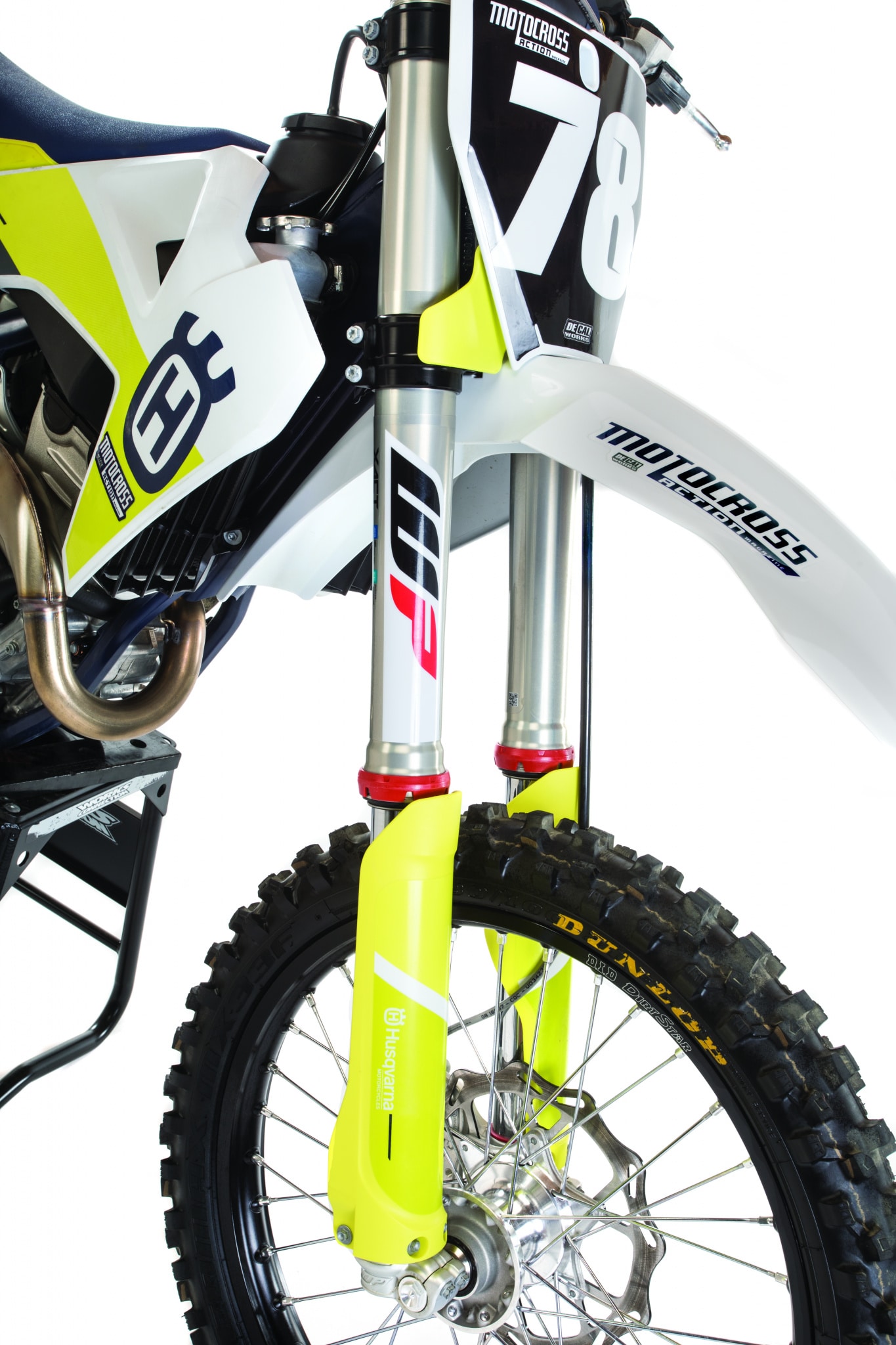
Q: DID HUSKY STICK WITH THE SOFTER SETTINGS IT USED IN 2020?
A: Yes and no. Everyone, other than fast guys, raved about the softer Husky suspension settings in 2020. Husky dropped its spring rates and softened the valving on its forks and shock because it felt that every other brand had gone way too stiff. It turned out to be a good marketing move. Why? Well, Husqvarna is a brand that the Vet riders of today grew up with. A suspension settings tailored to their demographic gave Husky loyalists one more reason to buy the most expensive bike out of the “Big Six” brands. Husky’s suspension setting target ed not just an age group that has warm-hearted memories of Husqvarna, but the age group with the highest annual income.

The 2020 Husqvarna setup got rave reviews for going softer, but was still skewered for harshness at the end of the stroke, a spike in the midrange, and for lacking the supple feel of coil spring forks. WP realized that it was on the right path but needed to take its fork’s internals one step further to get the plush action of a spring fork. With that in mind, WP made seven noteworthy changes to the forks.
(1) Fork length. The fork length was shortened 10mm (both the cartridge rods and fork stanchion).
(2) Oil-bypass notches. Oil -bypass notches were added to allow built-up oil pressure to escape when the stanchion bushing and mid-valve bushing got close enough together to compress the fork oil.
(3) Negative chamber. This is WP’s secret sauce for getting the air fork to feel more like a spring fork. When air is compressed inside a fork, there is a build-up of pressure that wants to spring the fork to full extension. This topping out has been an air fork bugaboo since Yamaha’s 1976 Speedo and Tach air forks. To prevent topping out, the fork needs a way to slow down the reactive movement on fork extension. Showa and Kayaba tried to stop top-out with separate air chambers to fight against fork rebound, which just added more confusion and complexity. WP came up with a simple yet ingenious way to solve the problem. WP’s solution had no moving parts, didn’t add any weight and didn’t require the rider to set air pressure in a separate chamber. How did WP do it? By tasking the built-up air pressure from the compression stroke with doing double duty on the rebound stroke to stop topping out. WP achieved this by putting a cross-over bleed slot in the cartridge tube that allows the pumped-up compression air pressure to leak into the rebound side of the fork to resist downward acceleration of the fork tubes. For 2021, WP doubled the length of the cross-over bleed slot and enlarged the size of the negative air chamber space for more progressive air pressure on the rebound side.
(4) Air seal. WP used four bypass holes in the air seal, similar in function to the oil bypass notches on the damping leg, to lessen air-pressure spikes in the air leg.
(5) Trampoline valve. Unlike on a traditional mid-valve shim stack, WP added a “trampoline shim,” so called because, unlike a normal shim that is tightly packed in by other shims and the shock piston, the trampoline shim has room to bend. It is given room to bend by being located above a small cavity that allows more damping in the mid-valve without making the damping stiffer at the end of the stroke.
(6) Bottoming resistance. The bottoming cone in the damping leg was replaced with a bump-stop rubber for 2021. This added space and helped reduce bottoming harshness.
(7) No-tools adjuster. Thanks to the extra space found by removing the bottoming cone, WP eliminated the need to get down on your hands and knees to adjust the rebound damping with a screwdriver. Now, a racer can adjust the fork’s rebound by turning a clicker by hand.
Q: BOTTOM LINE, ARE THE UPDATED WP AIR FORKS AS GOOD AS KAYABA SSS UNITS?
A: The best thing about the Yamaha’s Kayaba SSS forks is that anyone can hop on the bike and feel comfortable within a few clicks. For the majority of weekend warriors, not having to worry about their suspension settings is a big benefit. It should be noted that not all coil-spring forks work as well as Yamaha’s SSS version; however, every coil-spring fork basks in the warm glow of the Yamaha fork’s stellar reputation, even if the coil-spring fork is terrible. WP’s forks could not bask because they were different; they were air forks. They lived in the evil shadow of SSF-TAC and PSF-2 forks. Every flaw the WP forks had was highlighted by comparisons to SSS forks. And the WP AER forks, albeit the best air forks of all-time, did have their flaws. Some of those flaws were caused by WP mistakes and some were caused by WP users not understanding how to make an air fork work. Either way, flaws are flaws.
The forks on the 2021 Husqvarna FC250, however, are not flawed; they are very good. The gap between air forks and coil-spring forks has been narrowed. The updated WP Xact air forks have the same plush feel as coil-spring forks. They follow the ground, and they don’t spike at mid-stroke. They don’t lift off in chattery acceleration bumps. The harsh feel at the end of the stroke is gone. Big, small, slow and fast riders can jump on the bike and feel good without making any adjustments at all. Very impressive.
The updated WP forks not only have a very good standard setting, they allow a racer to take advantage of the fact that an air fork’s spring rate can be changed to compensate for different tracks or different size riders in minutes. Not enough can be said about the giant plus of the 3-pound weight savings. In fact, even loyal WP Cone Valve spring fork aficionados mention the weight difference when switching back and forth from Xact to Cone Valves. There is no doubt that the Kayaba SSS forks now have a new rival. WP’s perseverance paid off, big time.
Q: WHAT ABOUT THE 2021 FC250 REAR SHOCK?
A: On the rear of the 2021 FC250, the Husqvarna engineers shortened the rear-wheel travel to work in conjunction with the 10mm-shorter WP forks. How they shortened the shock is very interesting.
The 2021 Husqvarna rising-rate linkage has longer shock linkage arms (0.5mm), a revised bell crank and a 6mm-taller seal cap. The longer link arms lower the rear seat height, while the totally redesigned bell crank ensures that the rising rate curve is exactly what WP wanted. Had they used the 2020 bell crank, the initial starting point of the FC250 rear shock travel would have been stiffer. Additionally, with the lowered rear seat height, the rear tire would have hit the underside of the rear fender on bottoming. To stop this, Husqvarna shortened the stroke of the rear shock from 140mm to 134mm by making the seal cap 6mm taller.
There are two other shock mods that seem minor but play a big role in the Husky’s rear shock performance. First, Husqvarna got rid of its draggy shock linkage seals and replaced them with high-end SKF low-friction seals to free up the movement of the shock linkage considerably. Second, there is a new Viton O-ring hidden behind the shock piston bushing. This O-ring acts as a preload spring on the bushing to keep it in constant contact with the shock body’s inner circumference. The previous O-ring would deform over time and not provide a solid seal between the bushing and shock body. The new O-ring is made out of more resilient rubber and will not deform.
MXA test riders have always liked the Husqvarna rear shock. It has been spring-sensitive to rider weight in the past, but we had fewer issues with this in 2021 because Husqvarna returned to the pre-2020 spring rate.
Q: HOW DOES THE 2021 FC250 HANDLE?
A: Like a dream. We aren’t kidding. This bike does nothing wrong. It didn’t do much wrong in 2020, but the lowered chassis and improved suspension bring the handling up to a new level of excellence. The lowered chassis makes cornering a breeze. Front tire traction is incredible. You feel the most improvement on hard-pack flat corners or off-camber corners. The front wheel contact patch sticks like glue. You don’t have to worry about the rear end stepping out, as it tracks the front wheel like it is laser guided.
Were there any negatives? The only quibble we had was that the rear tire did rub the rear fender when it bottomed out. Husqvarna’s seal cap math was incorrect, or we need to lose weight, or we need to go a click or two stiffer on the low-speed compression clicker.
Q: IS THE FC250 POWERPLANT STILL COMPETITIVE?
A: Yes, but not because of any new technology. This is the identical engine architecture from six years ago. It is rare that the Austrian juggernaut rests on its laurels, but in this case we don’t blame them. Six years ago they made an engine that was unmatched by the competition. Now, six years later, this engine is platform shared between the Husky FC250, KTM 250SXF and GasGas MC 250. With Yamaha and Kawasaki making improved engines for 2021, the Austrian engine is getting a little long in the tooth.
The horsepower wars with the Japanese brands get all the headlines, but the real battle for power dominance in the 250 class over the last six years has been between Husqvarna and KTM. The FC250 locked in the most torque and horsepower awards over its Austrian stablemate, but that advantage did not translate to the track against the KTM 250SXF.
Why would two identical engines not make the same power on the racetrack? It may be a mystery in the motorcycle world, but not in a milieu of vacuum cleaners. When your vacuum doesn’t pick up dirt as well as it did when new, you take it apart to find out what’s wrong. What you normally find is pet hair from Rover or Kitty Cat blocking the tubes.
A motorcycle engine is much like a vacuum cleaner (and, in fact, will be identical to a vacuum cleaner when electric bikes become more commonplace). The more air that gets into a motorcycle or vacuum cleaner, the better it runs. For some reason, Husqvarna muffles its engine with a closed-off airbox. This deadens the power and leaves a flat spot between 10,000 and 11,000 rpm. Starting in 2020, Husky gave FC250 buyers an optional vented airbox. Use it. It’s not as efficient as it should be, but it gives the FC250 a 1/2-horse more power throughout the powerband.
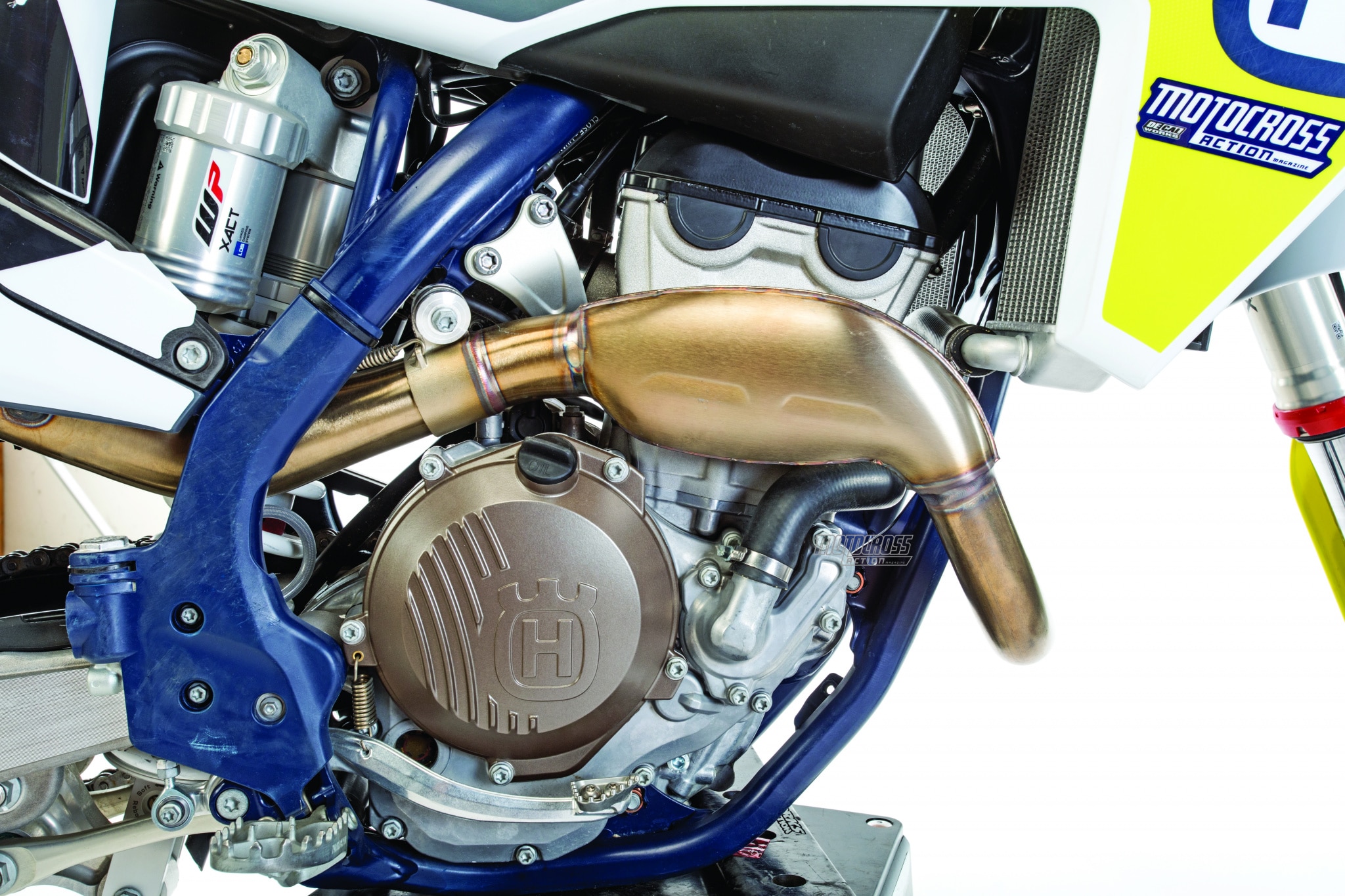
Q: DID WE CHANGE THE GEARING ON THE FC250?
A: The great thing about having a do-it-all engine is that you can move the power around how you see fit with gearing. Over the past six years with this engine, we have been all over the map with gearing, mostly due to the ECU map settings and changes to the airbox and cover. Even with these changes, testers would vary drastically in their gearing preferences. Why? Because they could.
Stock gearing back in 2016 was 13/50. We didn’t have any problems with this gearing. The very next year, Husky decided to jump to much taller 14/51 gearing. We were shocked when Husky made such a drastic change. Top-tier riders liked the taller gearing because they could maintain enough momentum in the corners for the potent engine to pull them around the track. On the other side of the coin, this gearing didn’t work at all for slower riders and tight tracks. Plus, many riders never rev the FC250 to its 14,000-rpm rev limiter. These riders should gear the FC250 down to get more pep out of the corners. In their case, they should go back to the 13/50 gearing from 2016.
For 2021, the 14/51 gearing isn’t as bad as it once was. Even though the powerplant is the same, the ECU maps have been vastly improved, and the vented airbox cover helps the FC250 get moving. With that said, half the testers kept the stock gearing, believing that the engine offered enough low-end to pull them out of corners. They liked the fact that they didn’t have to shift very often. The other half went one up on the rear to a 52-tooth rear sprocket or returned to the 13/50 gearing.
Q: WHAT DID WE HATE?
A: The hate list:
(1) Bolts. Check the spoke nipples and rear sprocket bolts at regular intervals.
(2) Airbox. We have no idea why Husqvarna would design an airbox like this. Well, actually, we know why–they wanted to mimic their hipster street bike bodywork with the two-piece design. Unfortunately, the engine is muted and the air (and therefore power) is restricted. It also adds weight and complicates the process of applying graphics.
(3) Gas hose. The gas hose gets tangled up when taking the gas gap on and off.
(4) Side plates. Two-piece side plates mean two-piece number plate backgrounds and a Grand Canyon-size gap.
(5) Seat cover. Some test riders liked last year’s gripper seat cover better, as the new one has less grip, but it doesn’t grab your pants as much..
(6) Brake. We always carry spare brake springs in our toolbox. They break.
Q: WHAT DID WE LIKE?
A: The like list:
(1) Weight. The 2021 Husqvarna weighs 219 pounds, which is a pound more than the KTM 250SXF but 9 pounds lighter than some of its 250 competitors.
(2) Brakes. The Brembo brakes are great.
(3) Clutch. The FC250 clutch design is a Belleville washer-activated, steel basket, DS (diaphragm steel) clutch, not the rubber-damped DDS cush hub clutch from the FC450. This allows the FC250 clutch to be lighter.
(4) Electronic suite. We like having options to choose from; however, on a 250, most riders want all the power they can get, and 99 percent of the time test riders ran the aggressive map.
(6) Radiator cap. The KTM, GasGas and Husqvarna come with high pressure 1.8 radiator caps. Most Japanese bikes come with 1.1 caps.
(6) Air filter. We love how foolproof it is to put a KTM air filter cage into the airbox. No gymnastics required.
(8) Transmission. The gearbox is made by the Formula 1 supplier Pankl Racing systems. It makes shifting from gear to gear smooth as silk.
(8) Handling. This is the best-handling bike in its class hands down. It does everything right and nothing wrong.
(9) Seat cover. Some test riders hated last year’s gripper seat cover, and liked the new one better because it has less grip.
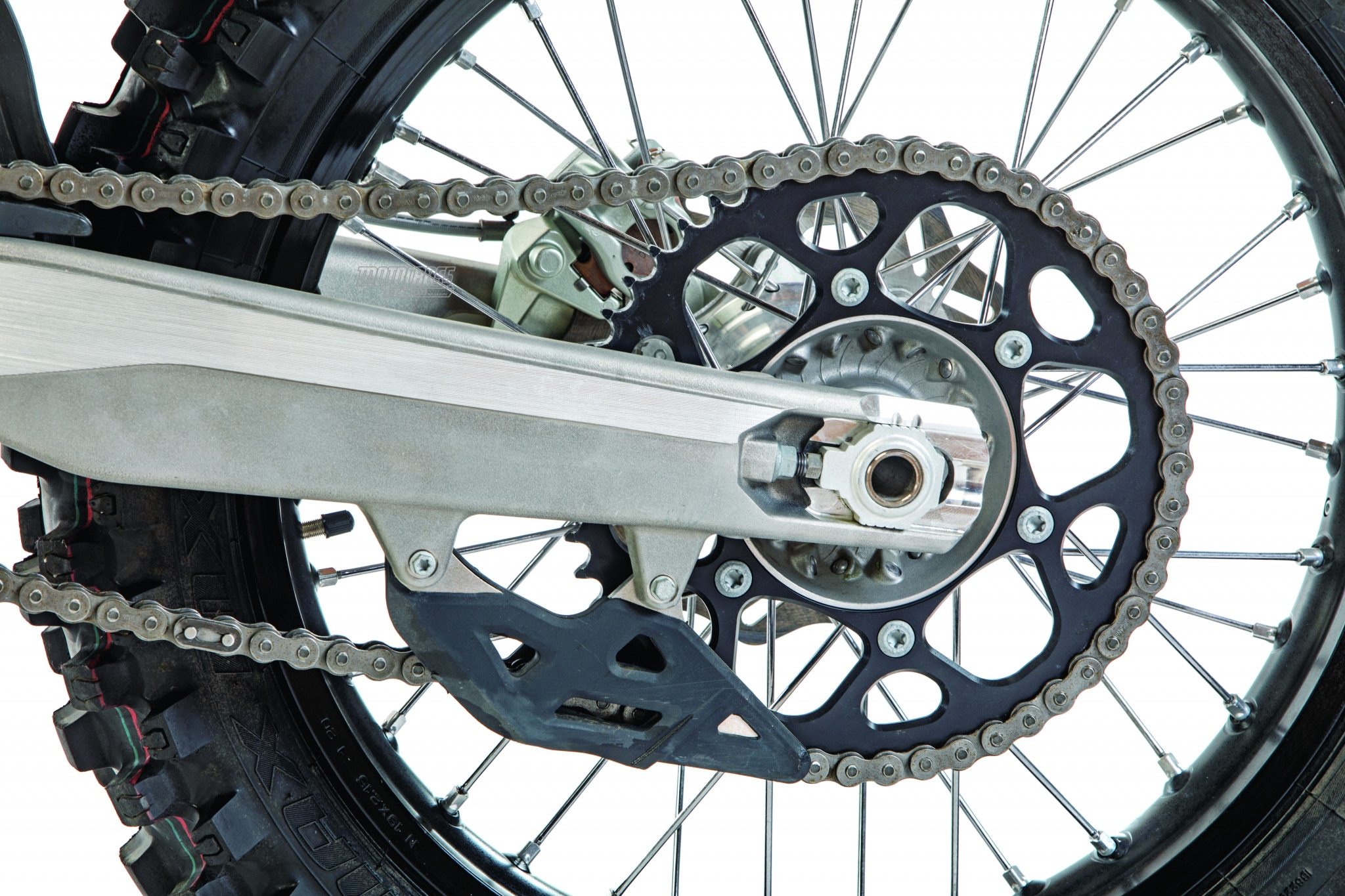
Q: WHAT DO WE REALLY THINK?
A: We still love this powerplant. It is still a very good engine. It offers good power across the entire rpm spectrum, but the engine could be a lot better if Husqvarna allowed it to breathe. The closed-off airbox hinders the potential of the engine. We don’t understand the thinking at Husqvarna regarding air management.
When it comes to handling, the 2021 Husqvarna FC250 is off the charts. It is the only bike that can turn on a dime and maintain stability when flying into Glen Helen’s high-speed Talladega first corner at 70 mph. What brought the FC250 to this level is its updated and shortened suspension. The stock setting was nearly perfect for all types of riders. We could just set sag for a rider and he would fall in love with the suspension without even turning a clicker. The lower ride height and improved fork feel make this the easiest 250 four-stroke motocross bike to ride. That meant that we could ride the bike harder easier. Kudos to Husky for daring to be different from everybody else in the 250 class, even KTM.
MXA’S 2021 HUSQVARNA FC250 SETUP SPECS
This is how we set up our 2021 Husqvarna FC250 for racing. We offer it as a guide to help you find your own sweet spot.
48MM XACT FORK SETTINGS
The stock Husky Xact fork air setting is 10.5 bar or 152 psi. This pressure was perfect for the majority of our testers. If offered a plush feeling that held up well on hard hits. This is a great base setting for just about any rider. Remember to bleed the air out of both forks each ride. It is the difference between a great setting and a horrible one. Many testers tried different clicker settings, but most ended up at stock. Lighter riders should go softer on compression to use more of the stroke. For hardcore racing, we recommend this fork setup for an average rider on the 2021 Husqvarna FC250 (stock specs are in parentheses):
Spring rate: 152 psi
Compression: 12 clicks out
Rebound: 15 clicks out
Fork-leg height: Third line
Notes: Slower, older and lighter riders should not be afraid to go lower on the air pressure. Last year, slower riders went as low as 135 psi, but for 2021, the lowest any test rider went was 140 psi. Bleed the outer chambers at regular intervals. Reset the air pressure to your chosen settings between motos (once the forks have cooled down from riding).
WP SHOCK SETTINGS
This is a very good shock that is perfectly balanced with the forks. The majority of testers liked the standard setting best. Lighter riders will want to go out on low-speed compression. For hardcore racing, we recommend this shock setup for the 2021 Husqvarna FC250 (stock specs are in parentheses):
Spring rate: 45 N/mm
Race sag: 105mm
Hi-compression: 1-3/4 turns out (2 turns out stock)
Lo-compression: 15 clicks out
Rebound: 12 clicks out (15 clicks out stock)
Notes: We turned the high-speed compression damping in a 1/4 turn to lessen G-outs and run more rebound than the recommended setting.




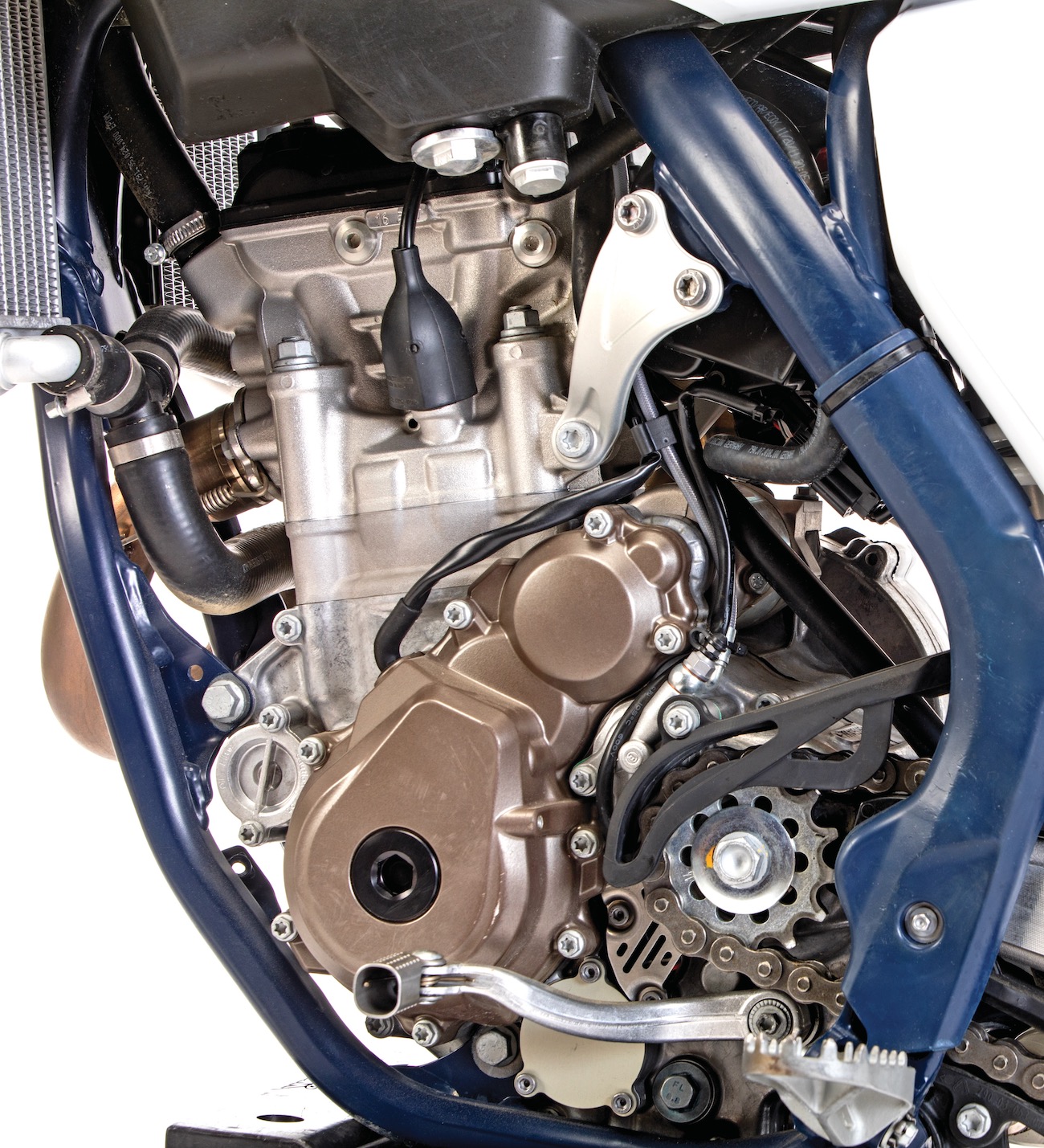

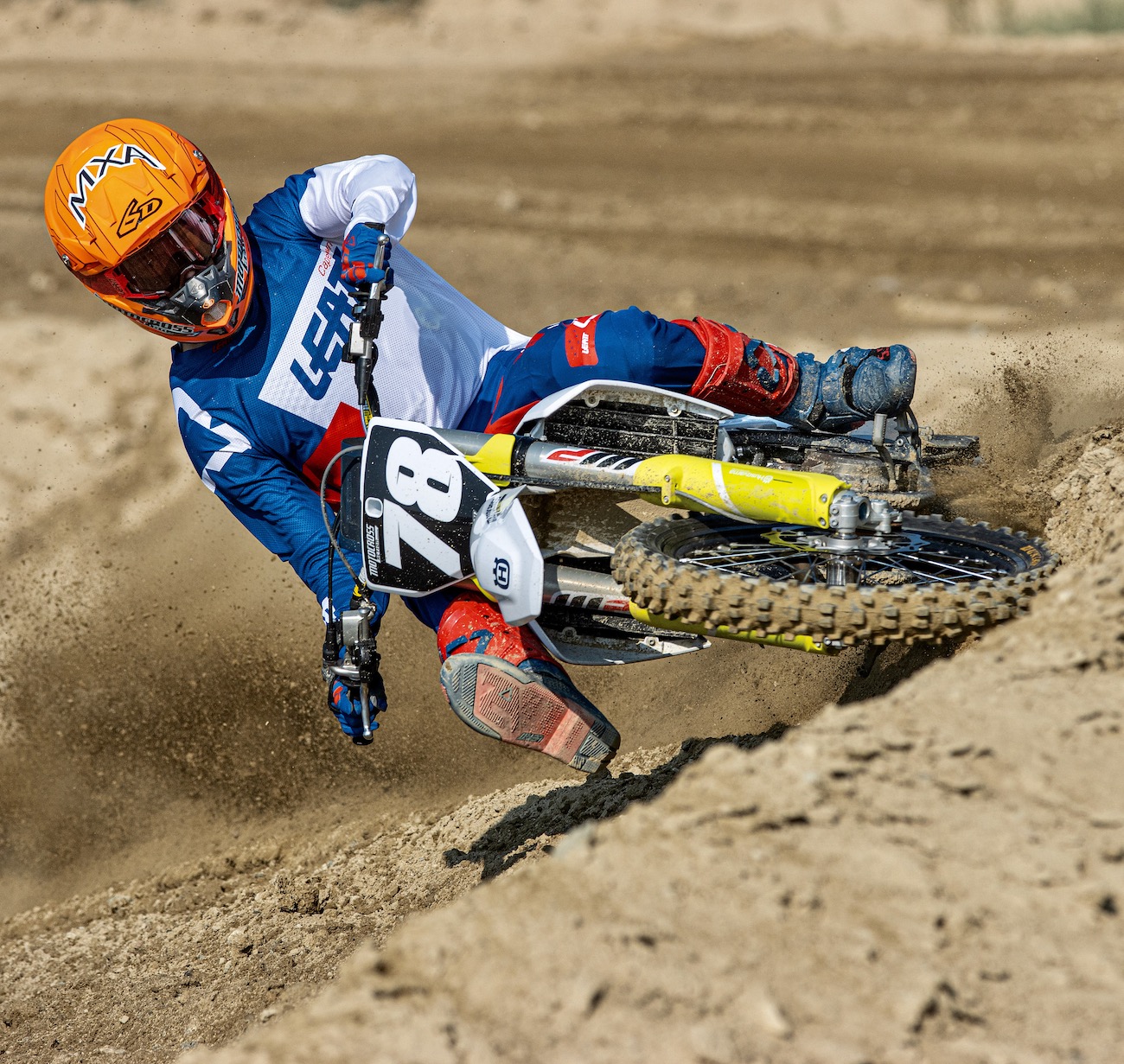
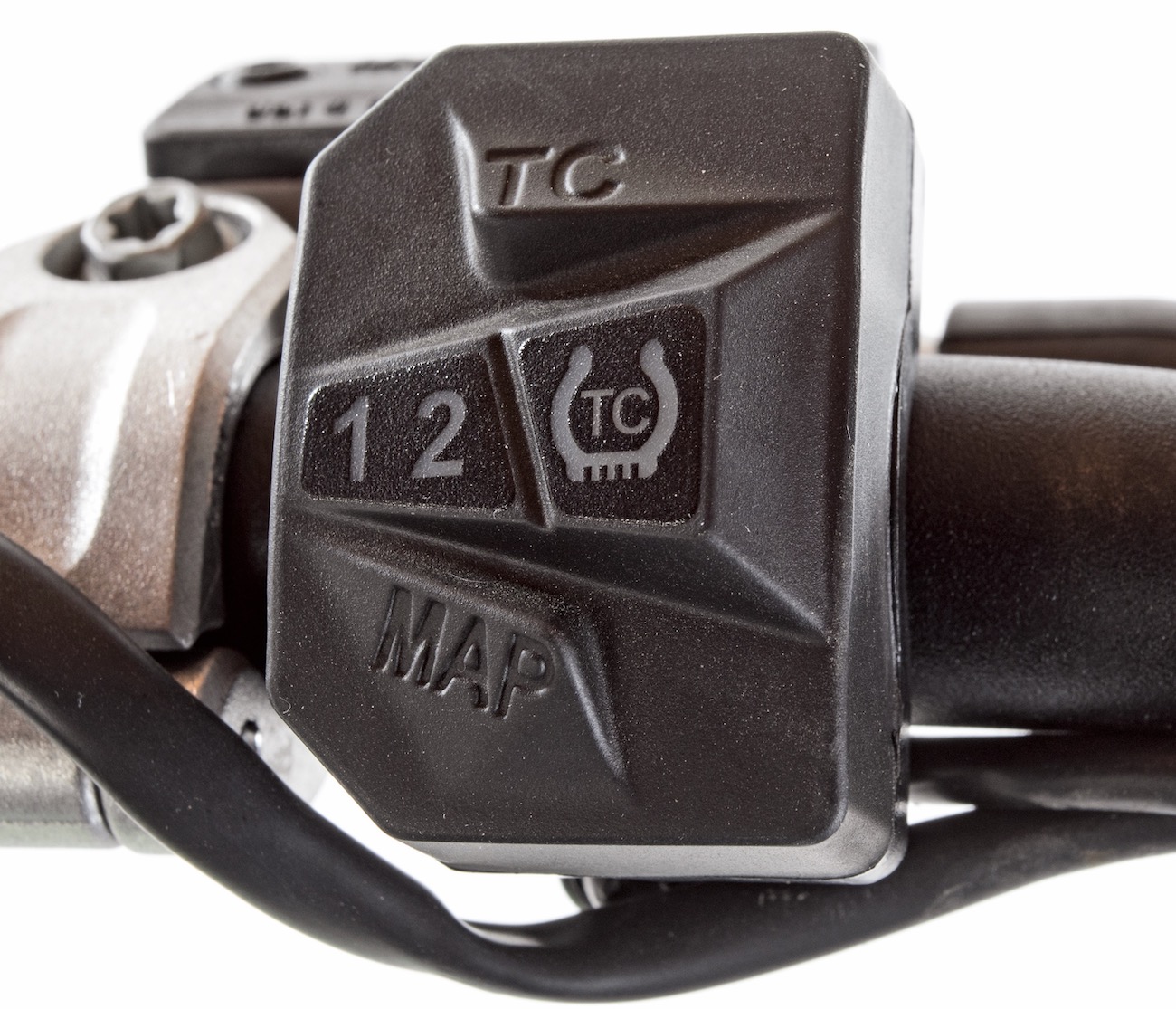
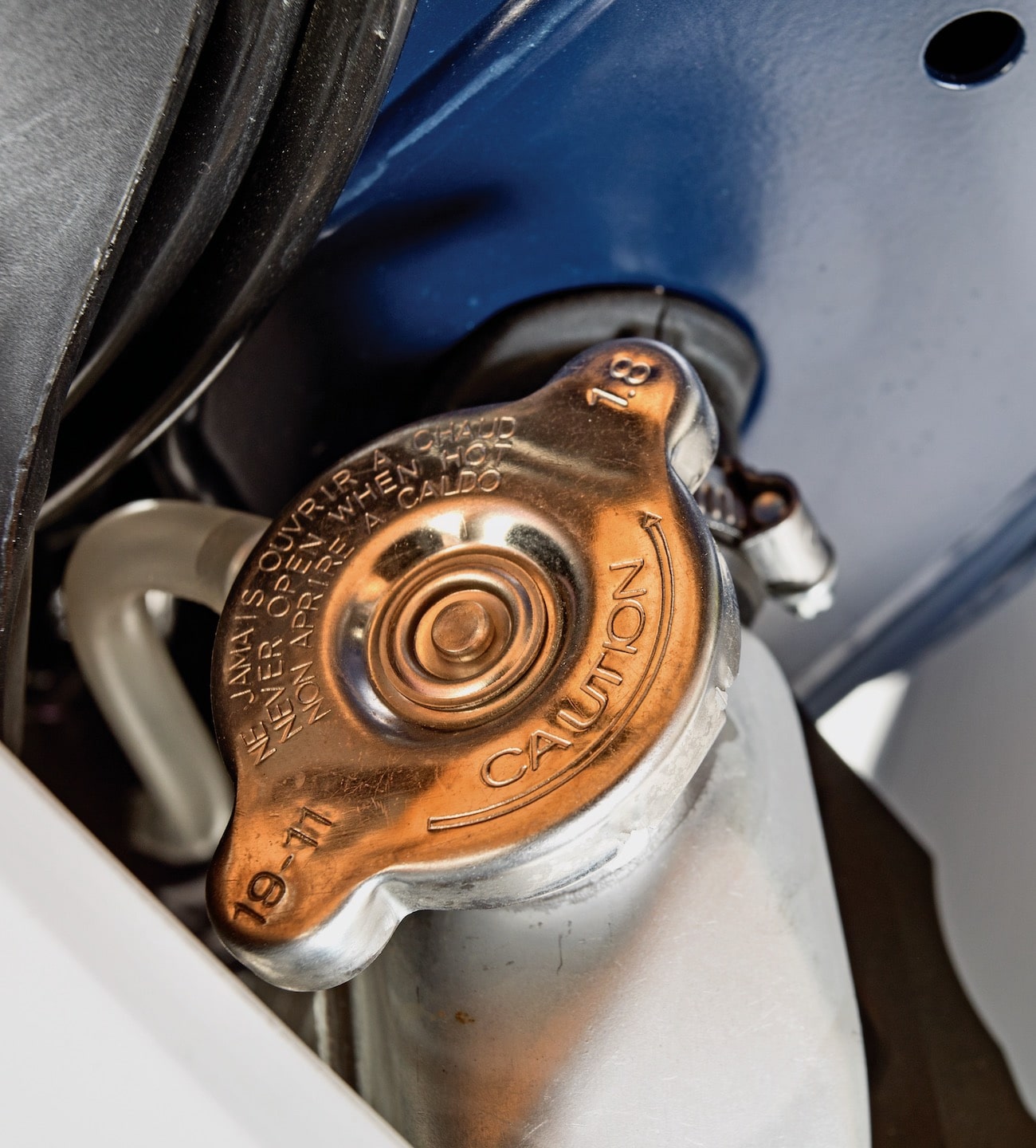
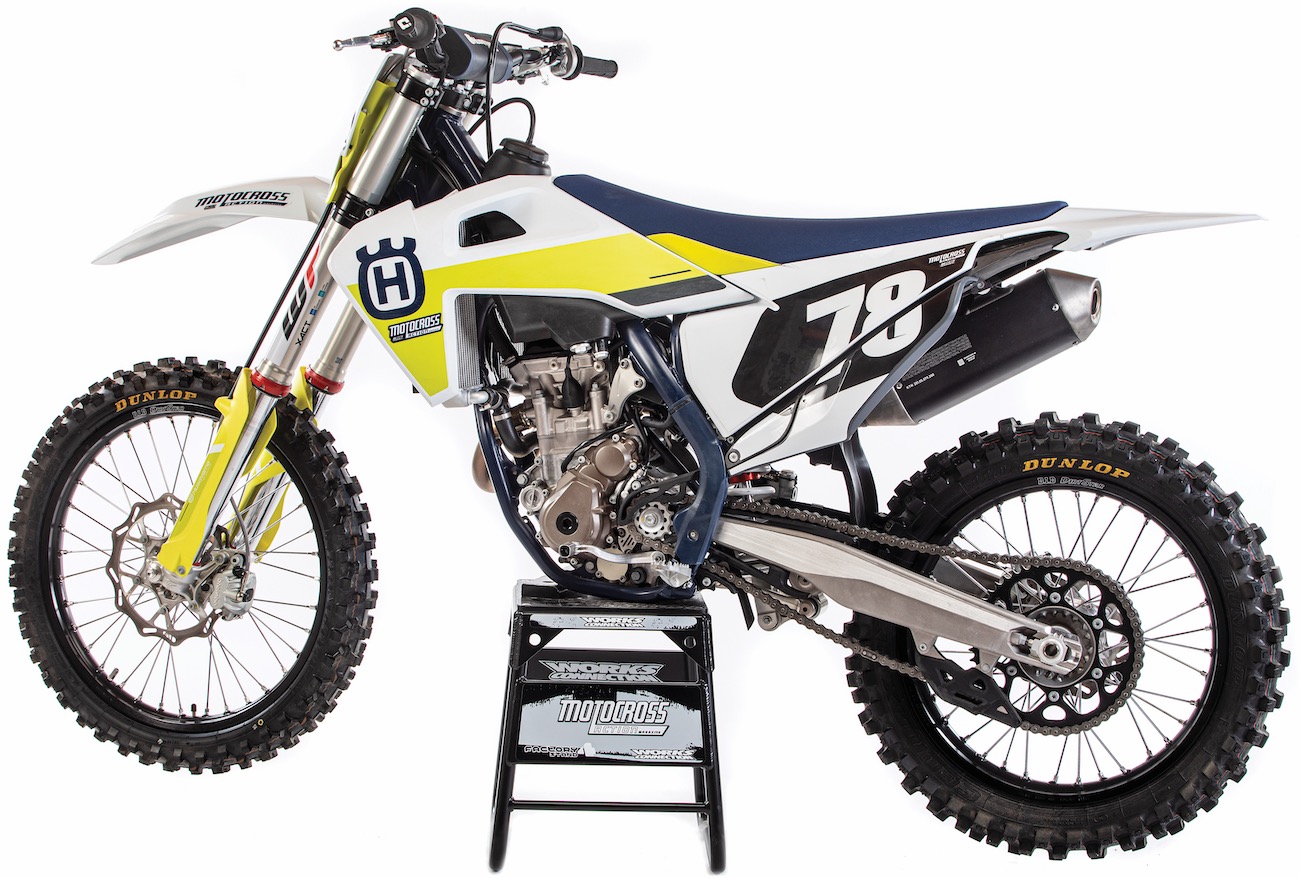



Comments are closed.